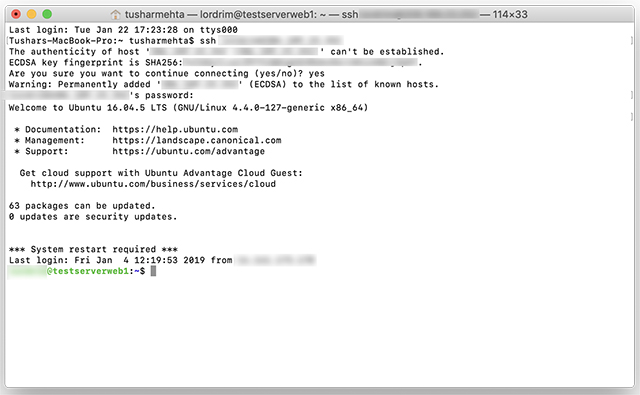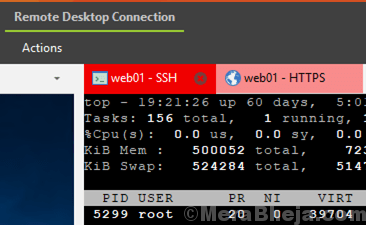
- #Terminal command download putty for mac install
- #Terminal command download putty for mac license
- #Terminal command download putty for mac windows
I however have also created a shortcut on my desktop for easy access, as when I am working, I usually connect to multiple remote servers and have multiple instances of PuTTY running at any given time when I am working. To run the application, type the command below: putty Within a few seconds, the installation should be complete and PuTTY should be ready to use on your MacBook.

#Terminal command download putty for mac install
Run the following command to install PuTTY: sudo port install putty The installation actually is pretty simple but all the groundwork that needs to be done before actually installing it is a lot of work. Once the selfupdate has run successfully, we are now ready to install PuTTY. Open your terminal again and type the following command: sudo port -v selfupdate Once downloaded, install it on your system. Once MacPorts is installed, we need to now install something called XQuartz. Next, head to this URL to download MacPorts to your local computer after choosing the correct OS version runnning on your system. Scroll to the bottom by hitting the spacebar and once you are there, to accept, type accept, and hit return. If you don’t see this, try the command given below instead: sudo /Applications/Xcode.app/Contents/Developer/usr/bin/xcodebuild
#Terminal command download putty for mac license
You should see something like this: Accept XCode License Here’s the link for the same – Accept XCode LicenseĪfter installing XCode Command Line Tools, fire up your terminal and type the following command: sudo xcodebuild -license Surprisingly, it was not where it was supposed to be found but buried deep down on Apple’s site. I could find the correct link to the Command Line Tools for my version of XCode after spending a good amount of town. This, however, for me, was easier said than done. Once XCode installation completes successfully, we need to install what is called XCode Command Line Tools. You can download and install it from here – Install Command Line Tools for XCode To install some pre-requisites which in turn will allow us to install PuTTY on the MacBook Air M1, you will need to install XCode. So, now let’s go through each of the above-mentioned steps in detail. We have just been preparing the ground so far Fun-fact, we haven’t even installed PuTTY yet.Install Command Line Tools for XCode for your version from here –.So, I am jotting down the process below for anyone (or future me) who might need to see this.

#Terminal command download putty for mac windows
When I jumped into setup PuTTY on my new MacBook Air, I realized that installing PuTTY on MacBook was not as simple as installing PuTTY on Windows is. and on the mobile front, I work primarily on Flutter. If you don’t already know, on the web front, I mainly work on Laravel, Tailwind CSS, VueJS, etc. However, before I could use it, I had to set it up for work.Īnd one of the first things that needed to be done before anything else was setting up PuTTY as accessing remote servers via the shell is one of the most frequent and important things that I do. Recently, I purchased a MacBook Air M1 as another development machine in my toolkit.

Unix telnet will attempt to detect or guess whether the service it is talking to is a real Telnet service or not PuTTY prefers to be told for certain.As a developer, changing platforms is not really a straightforward process. Really there is no actual protocol at all the bytes sent down the connection are exactly the ones you type, and the bytes shown on the screen are exactly the ones sent by the server. For example, telnet 25 might enable you to talk directly to the SMTP service running on a mail server.Īlthough the Unix telnet program provides this functionality, the protocol being used is not really Telnet. On Unix machines, you can do this using the system's telnet command to connect to the right port number. Sometimes it can be useful to connect directly to one of these services and speak the protocol ‘by hand’, by typing protocol commands and watching the responses.


 0 kommentar(er)
0 kommentar(er)
